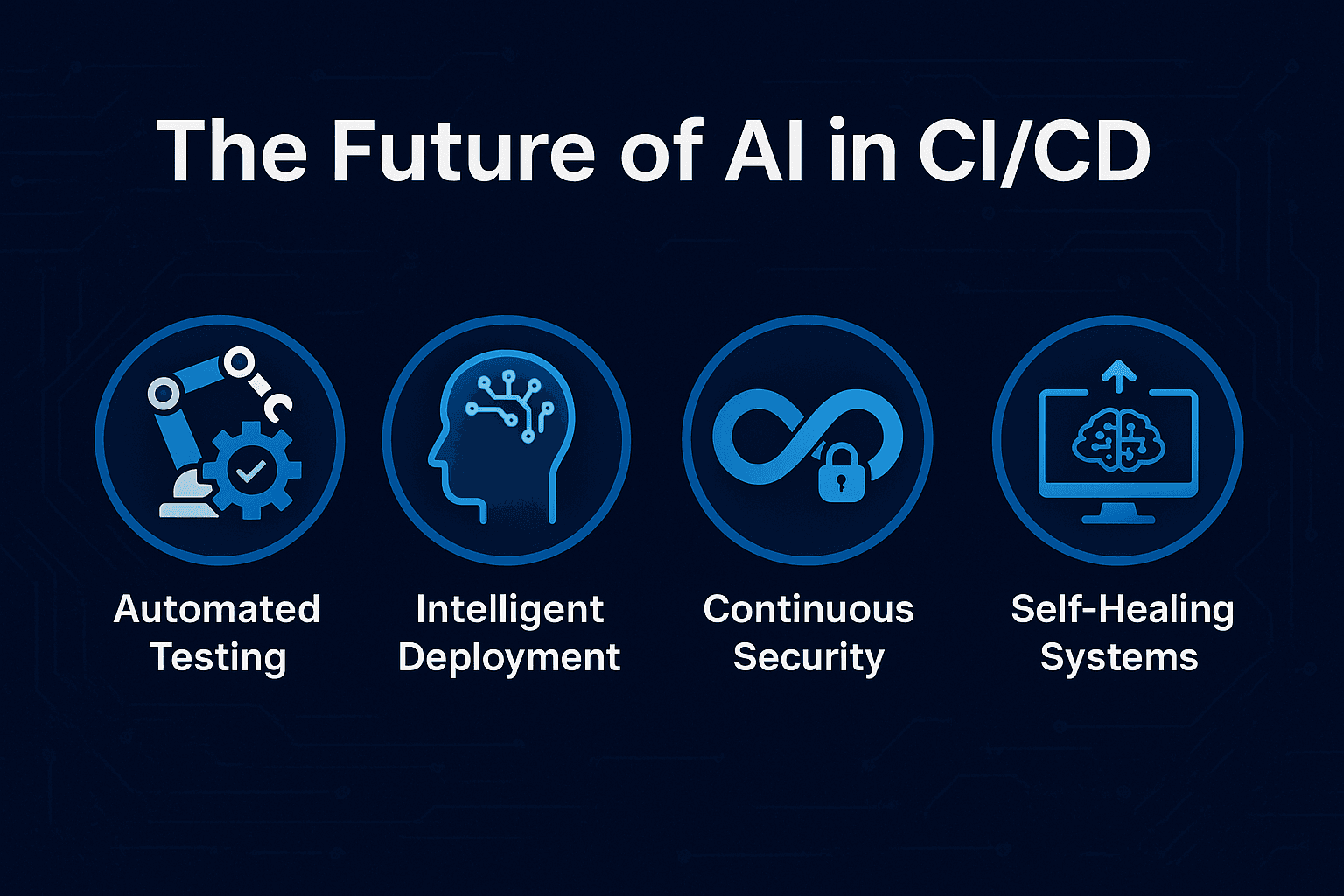In the fast-paced world of software development, Continuous Integration and Continuous Deployment (CI/CD) have become essential for maintaining rapid and reliable releases. However, traditional CI/CD processes often face challenges related to efficiency, error detection, and optimization. Artificial Intelligence (AI) is poised to revolutionize these pipelines, automating mundane tasks and enhancing decision-making. From predictive analytics to intelligent automation, AI offers innovative solutions that not only streamline CI/CD processes but also enhance overall software quality. In this article, we will explore how AI can significantly improve CI/CD processes and what it means for modern development teams.
The Evolution of CI/CD: automate
The concept of Continuous Integration (CI) and Continuous Deployment (CD) originated as a way to ensure seamless and frequent software releases. Initially, developers integrated code manually, which often led to lengthy integration periods and a high risk of errors. This manual process was both time-consuming and error-prone, especially as codebases grew more complex. The introduction of CI/CD practices aimed to automate these processes, enabling faster and more reliable releases.
With the adoption of agile development methodologies, CI/CD practices became integral to maintaining a steady flow of updates and improvements. Automation tools like Jenkins, GitLab CI, and Travis CI emerged as vital components of modern software development pipelines. These tools automate code integration, testing, and deployment, allowing developers to focus on innovation rather than repetitive tasks.
However, despite these advancements, traditional CI/CD pipelines still faced challenges, particularly in handling unexpected failures, optimizing resource allocation, and maintaining consistent deployment environments. AI is now addressing these challenges by introducing intelligent decision-making capabilities and real-time problem-solving mechanisms.
could not
Code quality and comprehensive testing are crucial aspects of CI/CD pipelines. While traditional automation improved efficiency, it could not predict and prevent potential failures proactively. AI-driven tools enhance code quality assurance by employing machine learning algorithms to identify problematic code patterns and suggest improvements.
Predictive Testing and Bug Detection: Machine learning models analyze historical testing data to detect patterns associated with code failures. This predictive capability allows teams to prioritize tests for high-risk areas, significantly reducing testing cycles while maintaining robust quality assurance.
Intelligent Test Case Generation:
AI can generate test cases based on code changes, automatically identifying new test scenarios and edge cases. By leveraging machine learning techniques, AI dynamically adjusts test coverage to ensure that critical areas are always thoroughly tested.
Self-Healing Test Suites:
AI-driven CI/CD systems can detect anomalies during test execution and automatically fix failing tests. This self-healing process reduces manual intervention, ensuring continuous testing even in complex environments.
Intelligent Deployment Automation:
Automating deployments is essential for reducing human error and ensuring consistent performance across all environments. AI enhances deployment strategies by analyzing past deployment data to predict potential issues and proactively suggest configuration adjustments.
Dynamic Configuration Management: AI-powered pipelines dynamically adjust configurations based on the deployment environment. This flexibility ensures that applications remain compatible across diverse platforms, minimizing deployment failures and reducing manual configuration errors.
Failure Prediction and Rollback Strategies: By analyzing deployment metrics, AI can forecast potential failures and implement rollback strategies before they impact production. This predictive approach mitigates risks and maintains service availability.
Smart Release Scheduling:
AI systems analyze traffic patterns, user activity, and performance metrics to determine the optimal time for deployment. This data-driven approach helps minimize disruptions during updates and ensures smooth user experiences.
Monitoring and Incident Management with AI:
Post-deployment monitoring is crucial to maintaining application health. Traditional monitoring tools generate numerous alerts, making it challenging to isolate critical issues. AI enhances monitoring through anomaly detection and real-time incident management.
Anomaly Detection:
AI-driven monitoring systems continuously analyze metrics to detect anomalies and performance deviations in real time. Early detection of anomalies allows teams to address potential issues before they escalate, preventing major outages.
Incident Correlation and Root Cause Analysis:
AI tools correlate alerts from various sources to identify the root cause of incidents. By automating this analysis, teams can resolve issues faster and reduce downtime.
Automated Recovery and Self-Healing:
When incidents occur, AI-powered systems automatically trigger predefined recovery actions, such as restarting services or reallocating resources. This self-healing capability ensures uninterrupted operations and minimizes human intervention.
Resource Optimization and Cost Management with AI:
Efficient resource utilization is essential for maintaining cost-effective CI/CD pipelines. AI-driven resource management tools dynamically allocate computing power based on demand, ensuring optimal performance without unnecessary expenditure.
Dynamic Resource Allocation: AI models monitor resource usage patterns and predict peak demand periods, automatically scaling resources as needed. This proactive management reduces costs associated with over-provisioning.
Cost Forecasting and Budget Optimization: Predictive analytics help teams estimate future costs by analyzing usage data. This insight allows organizations to make informed budgetary decisions and allocate resources more efficiently.
Automated Scaling and Load Balancing:
AI algorithms dynamically adjust service capacity to accommodate varying loads, distributing traffic efficiently and preventing performance degradation.
Predictive Analytics and Intelligent Decision Making:
Data-driven insights empower CI/CD teams to make informed decisions throughout the software lifecycle. AI leverages historical data to forecast outcomes, streamline builds, and evaluate potential risks.
Data-Driven Build Optimization: By analyzing previous builds, AI identifies configuration settings that yield optimal performance. This continuous learning process enhances build reliability and reduces failure rates.
Proactive Risk Assessment: AI-driven analytics assess the potential impact of code changes, helping teams anticipate issues before they reach production environments.
Continuous Improvement through Feedback Loops: Feedback loops integrated into CI/CD pipelines enable AI to learn from past deployments, refining processes and improving efficiency over time.
The Future of AI in CI/CD:
AI-driven CI/CD processes will continue to evolve, integrating deeper automation and intelligent decision-making. Future advancements may include fully autonomous pipelines that require minimal human oversight, adaptive systems that adjust to environmental changes, and smarter DevOps collaboration.
Conclusion:
AI is not just transforming CI/CD processes but redefining how software development operates. By leveraging AI-driven automation, organizations can achieve faster releases, improved code quality, and optimized resource management. Embracing AI in CI/CD pipelines is no longer optional but a strategic move towards maintaining competitiveness in the modern software landscape.





